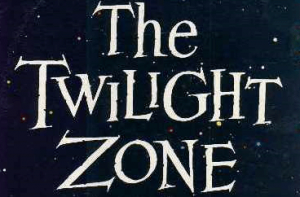The Twilight Zone
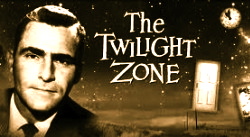
The History of The Twilight Zone
The Twilight Zone is an American television anthology series created by Rod Serling. It is a series of unrelated stories containing drama, psychological thriller, fantasy, science fiction, suspense, and/or horror, often concluding with a macabre or unexpected twist. A popular and critical success, it introduced many Americans to common science fiction and fantasy tropes. The program followed in the tradition of earlier shows like Tales of Tomorrow (1951–53), which also dramatized the short story “What You Need”, and Science Fiction Theatre (1955–57), and radio programs like The Weird Circle, Dimension X, X Minus One and the radio work of one of Serling’s inspirations, Norman Corwin. The success of the series led to a feature film, a radio series, a comic book, a magazine, and various other spin-offs that spanned five decades, including two “revival” television series. The first ran on CBS and in syndication in the 1980s, the second ran on UPN from 2002 to 2003. In 2013 TV Guide ranked it #4 in its list of The 60 Greatest Dramas of All Time.
Television History
As a boy, Rod Serling was a fan of pulp fiction stories. As an adult, he sought topics with themes such as racism, government, war, society and human nature in general. Serling decided to combine these two interests as a way to broach these subjects on television at a time when such issues were not commonly addressed.
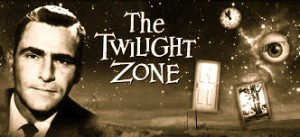 Throughout the 1950’s, Serling established himself as one of the most popular names in television. He was as famous for writing televised drama as he was for criticizing the medium’s limitations. His most vocal complaints concerned censorship, which was frequently practiced by sponsors and networks. “I was not permitted to have my senators discuss any current or pressing problem,” he said of his 1957 production The Arena, intended to be an involving look into contemporary politics. “To talk of tariff was to align oneself with the Republicans; to talk of labor was to suggest control by the Democrats. To say a single thing germane to the current political scene was absolutely prohibited.”
Throughout the 1950’s, Serling established himself as one of the most popular names in television. He was as famous for writing televised drama as he was for criticizing the medium’s limitations. His most vocal complaints concerned censorship, which was frequently practiced by sponsors and networks. “I was not permitted to have my senators discuss any current or pressing problem,” he said of his 1957 production The Arena, intended to be an involving look into contemporary politics. “To talk of tariff was to align oneself with the Republicans; to talk of labor was to suggest control by the Democrats. To say a single thing germane to the current political scene was absolutely prohibited.”
“The Time Element” (1958)
CBS purchased a teleplay in 1958 that writer Rod Serling hoped to produce as the pilot of a weekly anthology series. “The Time Element” marked Serling’s first entry in the field of science fiction.
Plot
Several years after the end of World War II, a man named Peter Jenson (William Bendix) visits a psychoanalyst, Dr. Gillespie (Martin Balsam). Jenson tells him about a recurring dream in which he tries to warn people about the “sneak attack” on Pearl Harbor before it happens, but the warnings are disregarded. Jenson believes the events of the dream are real, and each night he travels back to 1941. Dr. Gillespie insists that time travel is impossible given the nature of temporal paradoxes. While on the couch, Jenson falls asleep once again and dreams that the Japanese planes shoot and kill him. In Dr. Gillespie’s office, the couch Jenson was lying on is now empty. Dr. Gillespie goes to a bar where he finds Jenson’s picture on the wall. The bartender tells him that Jenson had tended there, but he was killed during the Pearl Harbor attack.
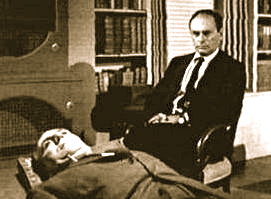 William Bendix and Martin Balsam in “The Time Element”
William Bendix and Martin Balsam in “The Time Element”
Production
With the “Time Element” script, Serling drafted the fundamental elements that would distinguish the series still to come: a science-fiction/fantasy theme, opening and closing narration, and an ending with a twist. However, “The Time Element” was purchased only to be shelved indefinitely.
This is where things stood when Bert Granet, the new producer for Westinghouse Desilu Playhouse, discovered “The Time Element” in CBS’ vaults while searching for an original Serling script to add prestige to his show. “The Time Element” (introduced by Desi Arnaz) debuted on November 24, 1958, to an overwhelmingly delighted audience of television viewers and critics alike. “The humor and sincerity of Mr. Serling’s dialogue made ‘The Time Element’ consistently entertaining,” offered Jack Gould of The New York Times. Over six thousand letters of praise flooded Granet’s offices. Convinced that a series based on such stories could succeed, CBS again began talks with Serling about the possibilities of producing The Twilight Zone. “Where Is Everybody?” was accepted as the pilot episode and the project was officially announced to the public in early 1959. “The Time Element” was not aired on television again until it was shown as part of a 1996 all-night sneak preview of the new cable channel TVLand. It is available in an Italian DVD boxed set titled Ai confini della realtà – I tesori perduti. The Twilight Zone Season 1 Blu-ray boxed set released on September 14, 2010 offers a remastered high-definition version of the original Desilu Playhouse production as a special feature.
Original series (1959–1964) – The Twilight Zone (1959 TV series)
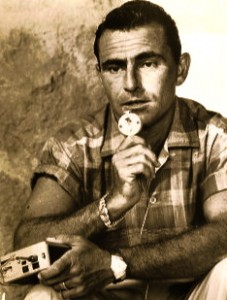 Rod Serling working on his script with a dictating machine, 1959
Rod Serling working on his script with a dictating machine, 1959
The series was produced by Cayuga Productions, Inc. a production company owned and named by Serling. It reflects his background in Central New York State and is named after Cayuga Lake, on which Ithaca College is located.
Aside from Serling, who wrote or adapted nearly two-thirds of the series’ total episodes, writers for The Twilight Zone included leading authors such as Charles Beaumont, Ray Bradbury, Earl Hamner, Jr., George Clayton Johnson, Richard Matheson, Reginald Rose, and Jerry Sohl. Many episodes also featured new adaptations of classic stories by such writers as Ambrose Bierce, Jerome Bixby, Damon Knight, John Collier, and Lewis Padgett.
Twilight Zone ’s writers frequently used science fiction as a vehicle for social comment, as networks and sponsors who censored controversial material from live dramas were less concerned with seemingly innocuous fantasy and sci-fi stories. Frequent themes on The Twilight Zone included nuclear war, McCarthyism, and mass hysteria, subjects that were avoided on more serious primetime television. Episodes such as “He’s Alive” or “The Monsters Are Due on Maple Street” offered specific commentary on current events and social issues. Other stories, such as “The Masks,” “I Dream of Genie,” or “Mr. Denton on Doomsday” were allegories, parables, or fables that reflected the moral and philosophical choices of the characters.
 Despite his esteem in the writing community, Serling found the series difficult to sell. Few critics felt that science fiction could transcend empty escapism and enter the realm of adult drama. In a September 22, 1959, interview with Serling, Mike Wallace asked a question illustrative of the times: “…You’re going to be, obviously, working so hard on The Twilight Zone that, in essence, for the time being and for the foreseeable future, you’ve given up on writing anything important for television, right?” While Serling’s appearances on the show became one of its most distinctive features, with his clipped delivery still widely imitated today, he was reportedly nervous about it and had to be persuaded to appear on camera. Serling often steps into the middle of the action while the characters remain oblivious to him, but on one notable occasion they are aware of his presence: In the episode “A World of His Own,” a writer (Keenan Wynn) with the power to alter his reality objects to Serling’s narration, and promptly erases Serling from the show.
Despite his esteem in the writing community, Serling found the series difficult to sell. Few critics felt that science fiction could transcend empty escapism and enter the realm of adult drama. In a September 22, 1959, interview with Serling, Mike Wallace asked a question illustrative of the times: “…You’re going to be, obviously, working so hard on The Twilight Zone that, in essence, for the time being and for the foreseeable future, you’ve given up on writing anything important for television, right?” While Serling’s appearances on the show became one of its most distinctive features, with his clipped delivery still widely imitated today, he was reportedly nervous about it and had to be persuaded to appear on camera. Serling often steps into the middle of the action while the characters remain oblivious to him, but on one notable occasion they are aware of his presence: In the episode “A World of His Own,” a writer (Keenan Wynn) with the power to alter his reality objects to Serling’s narration, and promptly erases Serling from the show.
In season two, due to budgetary constraints, the network decided – against Serling’s wishes – to cut costs by shooting some episodes on videotape rather than film. The requisite multi-camera setup of the videotape format precluded location shooting, severely limiting the potential scope of the storylines, and the experiment was abandoned after just six episodes (“Twenty Two,” “Static,” “The Whole Truth,” “The Lateness of the Hour,” “The Night of the Meek”, and “Long Distance Call”).
The original series contains 156 episodes. Unlike seasons one through three, season four (1962–63) consists of one-hour episodes. Season five returned to the half-hour format.

